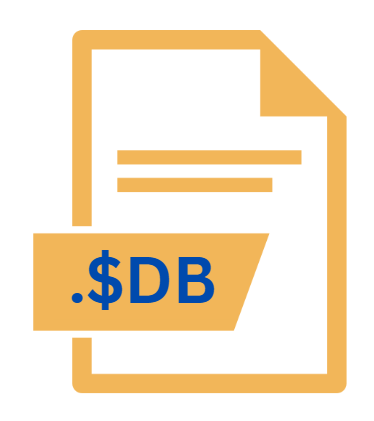.$DB File Extension

dBASE Temporary File
| Developer | dBASE |
| Popularity | |
| Category | Backup Files |
| Format | .$DB |
| Cross Platform | Update Soon |
What is an $DB file?
The .$DB file extension is associated with dBASE, a database management system (DBMS) known for its simplicity and powerful capabilities in handling databases.
Specifically, .$DB files are temporary files created by the dBASE application during its operation. These files serve as intermediaries, facilitating various processes within the database environment.
Temporary files are essential in managing data processing tasks without interfering with the primary database files, ensuring smooth and efficient operation.
More Information.
dBASE’s journey began with its initial release in 1979 as a database management system for microcomputers.
The primary purpose of dBASE was to provide users with an easy-to-use platform for managing structured data. As the system evolved, the need for temporary files like .$DB became apparent.
These files were designed to handle temporary data, reducing the risk of data loss or corruption in the primary database files.
By the late 1980s, dBASE had become a popular tool among businesses and developers, necessitating more sophisticated file management strategies, including the use of temporary files.
Origin Of This File.
The .$DB file extension is a product of the dBASE system, which has its roots in the early 1980s. Developed by Ashton-Tate, dBASE was one of the first successful database management systems for microcomputers.
The .$DB temporary files were introduced to manage the volatile data and intermediate processes that occur during database operations.
This allowed the primary database files to remain uncorrupted and provided a fail-safe mechanism for data management.
File Structure Technical Specification.
.$DB files are typically generated automatically by the dBASE application during various database operations.
These files are not meant to be accessed directly by users; instead, they serve as a workspace for the application. The structure of .$DB files is determined by the specific task being performed. Generally, these files include:
- Header Information: Metadata about the file, including the type of operation, file size, and creation timestamp.
- Data Blocks: Segments of data that are being processed or temporarily stored. These blocks are structured in a way that the dBASE application can easily read and write to them.
- Footer Information: End-of-file markers and checksums to ensure data integrity.
The technical specifications of .$DB files align with those of dBASE’s primary database files but are optimized for temporary use. They typically feature rapid read/write capabilities to support the fast-paced demands of database operations.
How to Convert the File?
Given that .$DB files are temporary and not intended for permanent storage, direct conversion to another file format is uncommon and generally unnecessary.
If there is a need to extract data from a .$DB file, the following steps can be considered:
- Use dBASE: Open the dBASE application and use it to process the temporary data stored in the .$DB file.
- Export Data: If the data within the .$DB file is needed in a different format, it can be exported using dBASE’s export functionalities to formats like .DBF (dBASE table file), .CSV (Comma-Separated Values), or .XLSX (Excel spreadsheet).
- Custom Scripts: Advanced users can write scripts in dBASE or other scripting languages like Python to read the .$DB file and convert its contents to the desired format.
Advantages And Disadvantages.
Advantages:
- Data Protection: By using .$DB files, dBASE ensures that temporary data does not interfere with or corrupt the main database files.
- Performance: Temporary files enable the system to handle intermediate data processing more efficiently, leading to faster database operations.
- Stability: The use of temporary files contributes to the overall stability of the database system, reducing the risk of crashes or data loss during complex operations.
Disadvantages:
- Storage Use: Temporary files can accumulate and consume significant storage space if not managed properly.
- Temporary Nature: Since these files are meant to be temporary, any critical data stored in them that is not saved elsewhere may be lost if the application crashes.
- Management Overhead: Users need to ensure that these temporary files are cleaned up periodically to maintain system performance and free up storage space.
How to Open $DB?
Open In Windows
- dBASE: Ensure that the dBASE application is installed.
- File Access: Open dBASE and use it to manage any .$DB files generated during operations.
Open In Linux
- Wine: Install Wine to run Windows applications on Linux. Set up dBASE within Wine.
- File Management: With dBASE running through Wine, .$DB files can be accessed and managed.
Open In MAC
- Virtualization or Emulation: Since dBASE is primarily a Windows application, using virtualization software like Parallels or an emulator like Wine can enable the running of dBASE on MacOS.
- Accessing Files: Once dBASE is running, .$DB files can be managed as they would be on a Windows system.










